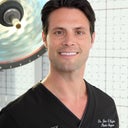Posted underRevision Rhinoplasty q&a
Revision rhinoplasty possible without the use of grafts? (Photo)
Hello. I had a rhinoplasty done about 9 years ago. One thing I am unhappy with is the tip. I feel like it's just a little to round and my nostrils are just a little to retracted up. I was wondering if lifting the columella, bringing back the infratip lobule ( I think that's what it's called) and shaving down the supratip lobule a bit will help fix this and possibly without the use of grafts? Thank you!
Answers (9)
From board-certified doctors and trusted medical professionals
Dr. Ronald J. Edelson, MD

Dr. Ronald J. Edelson, MD
Board Certified Plastic Surgeon
Answer
Dr. Scott Trimas, MD

Dr. Scott Trimas, MD
Board Certified Facial Plastic Surgeon
Answer
Dr. Jason Altman, MD

Dr. Jason Altman, MD
Board Certified Plastic Surgeon
Answer
Dr. John Layke, DO, FACS

Dr. John Layke, DO, FACS
Board Certified Plastic Surgeon
Answer
Dr. Thomas Trevisani, MD

Dr. Thomas Trevisani, MD
Board Certified Plastic Surgeon
Answer
Dr. Harry V. Wright, MD
Dr. Harry V. Wright, MD
Board Certified Facial Plastic Surgeon
Answer
Dr. Kailash Narasimhan, MD
Dr. Kailash Narasimhan, MD
Board Certified Plastic Surgeon
Answer
Dr. William Portuese, MD
Dr. William Portuese, MD
Board Certified Facial Plastic Surgeon
Answer
Dr. Oleh Slupchynskyj, MD, FACS (retired)
Dr. Oleh Slupchynskyj, MD, FACS (retired)
Board Certified Facial Plastic Surgeon
Answer
More Revision Rhinoplasty Questions
See all Revision Rhinoplasty Q&AWE SEND PRETTY
EMAILS
What’s trending? Who’s turning heads? Which TikTok myths need busting? We’ve got you. No fluff, no gatekeeping—just real talk. Get our free, unfiltered newsletter.